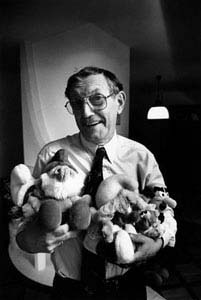
Pierre Culliford was a Belgian comics writer and artist who worked under the pseudonym Peyo. His best-known works are the comic book series The Smurfs and Johan and Peewit, the latter in which the Smurfs made their first appearance.

Johan and Peewit is a Belgian comics series created by Peyo and named after the two main characters. Since its initial appearance in 1947, it has been published in 13 albums that appeared before the death of Peyo in 1992. Thereafter, a team of comic book creators from Studio Peyo continued to publish the stories.

The Smurfs and the Magic Flute is a 1976 Belgian animated film starring the Smurfs, directed by their creator, Peyo. Although the film premiered in 1976 in Belgium, it was not released in the United Kingdom until 1979, and in the United States until 1983, in the wake of the characters' newfound popularity.
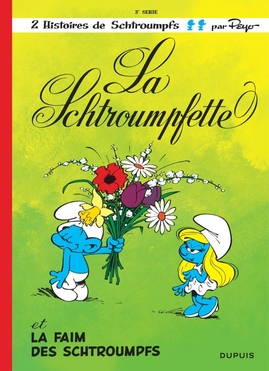
The Smurfette is the third album of the original French-language Smurfs comic series. The story has also been made into an episode of the Smurfs animated cartoon show, where the only known significant difference is that Smurfette stays in the village for the rest of the show's run. Apart from the titular story, it contains another one called La Faim des Schtroumpfs.

The Smurfs is a Belgian comic series, created by cartoonist Peyo. The titular creatures were introduced as supporting characters in an already established series, Johan and Peewit in 1958, and starred in their own series from 1959. More than forty Smurf comic albums have been created, 16 of them by Peyo. Originally, the Smurf stories appeared in Spirou magazine with reprints in many different magazines, but after Peyo left the publisher Dupuis, many comics were first published in dedicated Smurf magazines, which existed in French, Dutch and German. A number of short stories and one page gags have been collected in comic books next to the regular series. By 2008, Smurf comics have been translated into 25 languages, and some 25 million albums have been sold.

Schtroumpf Vert et Vert Schtroumpf is the ninth comic album adventure of the Smurfs, written and drawn by Peyo with Yvan Delporte as co-writer. The story is considered a parody on the still ongoing language war between French- and Dutch-speaking communities in the authors' native Belgium. The plot is similar in a way to King Smurf, an earlier adventure, in that the usually harmonious community of Smurfs falls into disarray due to the failure of father-figure Papa Smurf to exercise his leadership.
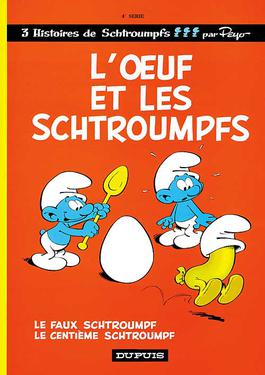
The Egg and the Smurfs is the fourth album of the original French-language Smurfs comic series created by Belgian artist Peyo.

The Smurfs and the Howlibird is the fifth album of the original French-language Smurfs comic series created by Belgian artist Peyo.
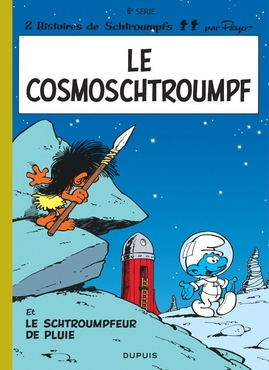
The Astrosmurf is the sixth album of the original French-language Smurfs comic series created by Belgian artist Peyo.
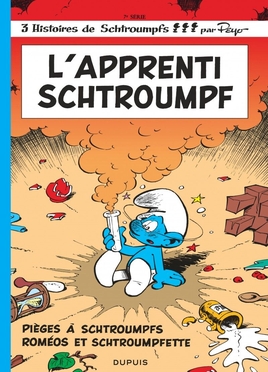
The Smurf Apprentice is the seventh album of the original French-language Smurfs comic series created by Belgian artist Peyo.
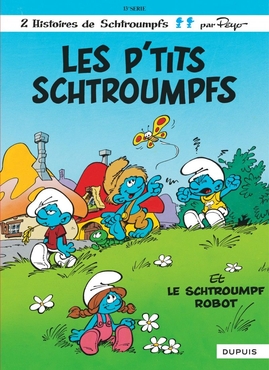
The Smurflings is the thirteenth album of the original French-language Smurfs comic series created by Belgian artist Peyo.

Smurf Soup is the tenth album of the original French-language Smurfs comic series created by Belgian artist Peyo.

Baby Smurf is the twelfth album of the original French-language Smurfs comic series created by Belgian artist Peyo.

The Olympic Smurfs is the eleventh album of the original French-language Smurfs comic series created by Belgian artist Peyo. It was first published in Spirou in 1980 and appeared in book format in 1984.
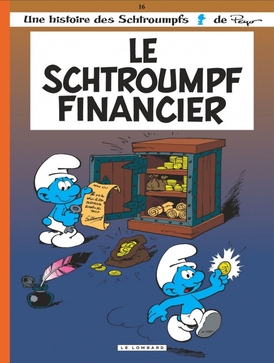
Finance Smurf is the sixteenth album of the original French-language Smurfs comic series created by Belgian artist Peyo. It is Pierre Culliford's last comic book work before his death on December 24, 1992.

The Smurfs is a Belgian comic franchise centered on a fictional colony of small, blue, humanoid creatures who live in mushroom-shaped houses in the forest. The Smurfs was created and introduced as a series of comic characters by the Belgian comics artist Peyo in 1958, wherein they were known as Les Schtroumpfs.

The Aerosmurf is the fourteenth album of the original French-language Smurfs comic series created by Belgian artist Peyo. Apart from the titular one, it contains other four stories: The Gluttony of the Smurfs, The Masked Smurfer, Puppy and the Smurfs and Jokey Smurf's Jokes.

The Strange Awakening of Lazy Smurf is the fourteenth album of the original French-language Smurfs comic series created by Belgian artist Peyo.

The Smurfs And The Book That Tells Everything is a Smurfs comic book story that was created and published by Studio Peyo in 2008.

The Smurfs is a Belgian computer-animated television series developed by Dupuis Audiovisuel, IMPS, and Peyo Productions, in association with KiKA, Ketnet, RTBF and Dargaud Media, with the participation of TF1. It is the third television show based on the Belgian comic franchise of the same name, created by Peyo, after the 1961 series and the 1981 series of the same name.



















